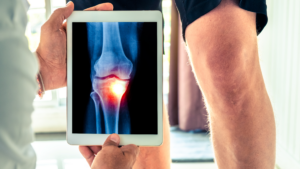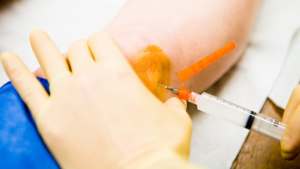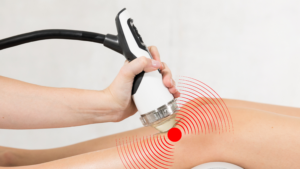Understanding Chronic Knee Pain: Causes, Solutions, and Preventive Strategies for Long-Term Relief
Understanding Chronic Knee Pain: Causes, Solutions, and Preventive Strategies for Long-Term Relief
For many people, chronic knee pain is a daily struggle. Whether it’s difficulty walking up stairs or persistent discomfort after an injury, knee pain often feels like an unsolvable puzzle. This post will explore the hidden causes behind stubborn knee pain, why focusing solely on the knee can miss the real issue, and effective solutions for achieving long-term relief.
Let’s break down what’s really happening in the knee joint, examine common missteps in treatment, and look at therapies that target the root cause—so you can get back to the activities you love.

Why Knee Pain Often Isn’t About the Knee
The Knee as a “innocent Joint”—Why It’s Often a Victim, Not the Culprit
If you didn’t recently injure your knee or undergo physical trauma, your pain may not be knee-related at all. The knee is positioned between the hip and ankle, absorbing impact from both and often bearing the brunt of dysfunctions that start elsewhere. Think of it as a spring that absorbs impact from both directions, lacking the rotational capabilities that the hip and ankle have. This structural simplicity is why dysfunctions in those nearby joints often push extra strain onto the knee.

Common Causes of Knee Pain Outside the Knee
Issues in the hip or ankle, previous injuries, and even imbalances in the lower back can all create uneven forces that strain the knee. Chronic pain can arise when these areas don’t work as they should, forcing the knee to overcompensate. For example:
- Lower Back Pain: Unaddressed lower back issues can shift additional pressure onto the knee joint.
- Ankle Instability: An untreated ankle sprain can impact the knee, pushing it into unnatural positions and causing dysfunction over time.
Mistakes in Treating Chronic Knee Pain
Treating Symptoms Instead of the Cause
Treating knee pain with anti-inflammatories or cortisone shots can temporarily alleviate pain, but without addressing the underlying dysfunction, the problem often worsens over time. These treatments don’t address the cause of the pain and can even make knee tissues more fragile, especially after repeated use of cortisone.

Failing to Address Soft Tissues and Muscle Imbalance
The knee’s function is supported by surrounding muscles and soft tissues. Without stabilizing and treating these muscles, the joint lacks the support needed for proper function. For instance, weakened quadriceps or glutes will cause other muscles around the knee to take on more load, leading to overuse injuries and pain.
Effective Treatment Approaches for Lasting Relief
A Holistic Approach—Start with Core and Muscle Activation
At the root of chronic knee pain is often a muscle imbalance or dysfunction that’s easily overlooked. To address this, start by strengthening the core, glutes, and quadriceps. These muscles provide essential support and prevent undue stress on the knee joint. Regular stretching for the hamstrings and calf muscles also keeps the entire leg’s kinetic chain in balance.

Shockwave Therapy: A Breakthrough for Knee Pain Relief
For those who have tried traditional therapies without success, shockwave therapy offers a powerful alternative. Shockwave therapy sends sound waves into the tissue, breaking down scar tissue and encouraging new blood flow. This therapy promotes collagen production, which is crucial for joint repair, and stimulates stem cell activation—an essential factor in knee healing.
Shockwave therapy is especially helpful post-surgery, as it works with the body’s natural healing mechanisms, even in areas where movement and blood flow are limited. After three to five sessions, patients typically experience improved mobility and reduced pain.

Solution of chronic knee pain
Preparing for Knee Replacement Surgery? Here’s What You Can Do
If knee replacement surgery is inevitable, preparing your body can accelerate recovery. Pre-surgery strengthening of your core, glutes, and quadriceps can improve your post-surgery rehabilitation. Muscle strength and flexibility help your body transition better, reducing recovery time and minimizing discomfort.
Why Shockwave Therapy Works Post-Knee Replacement
After surgery, scar tissue can form deep within the knee, making flexibility a challenge. Shockwave therapy breaks down these adhesions and stimulates blood flow to speed up healing. True shockwave therapy reaches deep within tissues—up to 12 centimeters—to improve blood circulation by up to 300%, further supporting muscle and tendon health.
Conclusion
Chronic knee pain can be a complex puzzle, often linked to muscle dysfunction and poor biomechanics throughout the leg. Understanding the true cause of your knee pain is the first step toward relief, and therapies like shockwave can make a meaningful difference by working with the body’s natural repair mechanisms.
If you’ve been struggling with knee pain, seek a practitioner who understands the holistic function of the body’s movement system. To learn more, book a consultation with one of our healthcare providers at Unpain Clinic. They’ll help you discover the root cause of your pain and develop a personalized treatment plan to get you back to pain-free living.
Uran Berisha,
B.Sc. PT, RMT
Shockwave Therapy Educator & Founder
Unpain Clinic & I Love Shockwave
